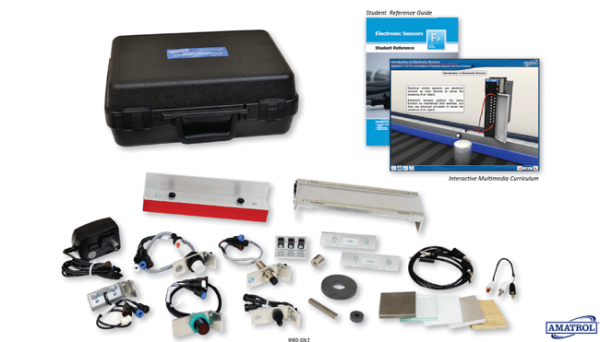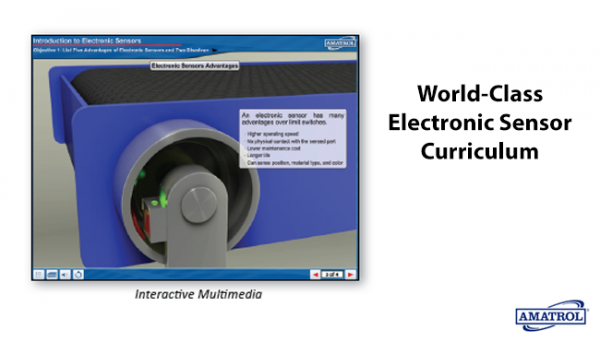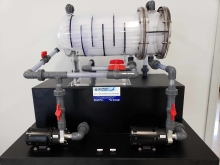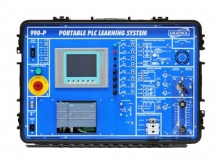Portable Electronic Sensors Learning System
Amatrol’s Portable Electronic Sensors Learning System (990-SN1) is designed to teach the operation of electronic, non-contact sensors and their applications in industry, such as sensing movement, detecting metal from non-metal, and determining speed. Designed for situations when there’s a need to use a trainer in multiple locations or where space is too small for a full-size trainer, the 990-SN1 is small and light enough to move with one hand, yet offers a depth and breadth of knowledge and skills that far exceeds its physical size.
The 990-SN1 includes a variety of electronic sensors, such as capacitive proximity, inductive proximity, magnetic reed, hall-effect, and photoelectric. These sensors can be used with a large array of provided test materials to learn how each sensor completes industrial tasks in real-world environments. Combined with Amatrol’s world-class curriculum, this innovated product provides learners with a thorough understanding of electronic sensor applications.
Electronic Sensor Training: Anywhere, Anytime
Because this get-up-and-go world requires an increased amount of flexibility and mobility, Amatrol has designed the 990-SN1 so that learners only need desk space for the trainer and a computer to study this vital industry skill. Electronic sensors are used in industrial applications for feedback to systems like electrical relay controls and programmable logic controllers. Learners will practice real-world skills on standard industrial grade components to ensure that they’re familiar with actual components when they enter the workforce. The 990-SN1 allows learners to build relay circuits that separate metallic and non-metallic materials, design controls for a stamping machine, and uses a sensor as a safety interlock.
World-Class Electronic Sensor Curriculum
Amatrol offers extensive, thorough multimedia curriculum covering electronic sensor advantages, functions, and components. The 990-SN1 curriculum discusses five different electronic sensors and describes the operation, applications, and characteristics that affect each sensors performance. As an example, learners will study a Hall Effect sensor and understand what the Hall Effect is and how the sensors are utilized on conveyor belts and in computer keyboards. Learners will then test a Hall Effect’s performance by sensing distance, hysteresis, and the ability to sense through different materials.
Multimedia Curriculum
Amatrol’s unmatched multimedia utilizes text, audio, and stunning 3D animations that engage learners in both theoretical knowledge and hands-on skills. This thorough, exceptionally detailed curriculum is built to begin with the basics and steadily advance to more complex concepts and skills. Through partnerships with key industry leaders and leading edge educators, Amatrol developed the right balance of knowledge and applied skills needed to train learners to work in their chosen field.
Student Reference Guide
A sample copy of this course’s Student Reference Guide is included with the learning system. Sourced from the multimedia curriculum, the Student Reference Guide takes the entire series’ technical content contained in the learning objectives and combines them into one perfect-bound book. If you would like to inquire about purchasing additional Student Reference Guides for your program, contact your local Amatrol Representative for more information.
Learning Topics
- Electronic Sensor Advantages
- Sensor Components
- Sensor Operation
- Transistors
- Inductive Sensors
- Capacitive Sensors
- Magnetic Reed Sensors
- Hall-Effect Sensors
- Photoelectric Sensors
- Sensor Measurement
- Sensor Applications
- Relay Circuits
Key Features
- Electronic Sensor Training: Anywhere, Anytime
- World-Class Electronic Sensor Curriculum
- Learning On The Go
- Multimedia Curriculum
- Student Reference Guide
Product Options
- Electronic Sensors Multimedia
- 6' Workstation (82-610)








